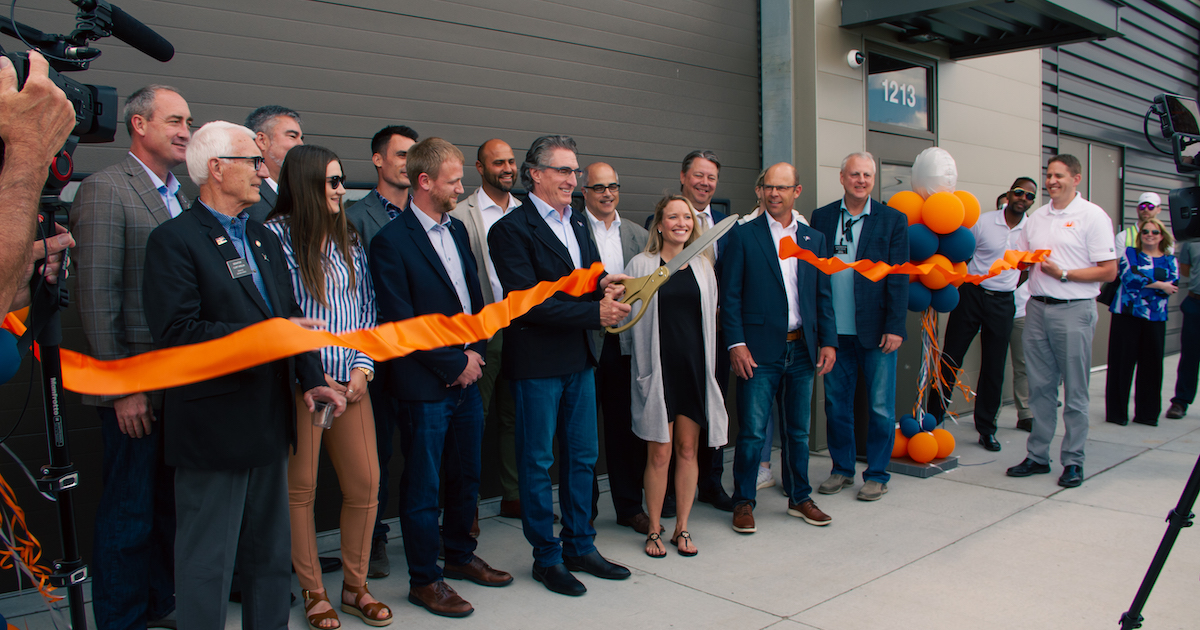
Powering Vantis Through New MNOC
At its recent grand opening, the Mission & Network Operations Center (MNOC) was described as integral to Vantis and the entire system’s success. Why is the MNOC so crucial to Vantis and the Unmanned Aircraft Systems (UAS) that fly on it?
It’s everything. The MNOC provides both the brains of the system, but also its heartbeat that keeps beyond-visual-line-of-sight (BVLOS) flights successfully operating, with capabilities to reach the entire state of North Dakota and beyond.
Inside the MNOC
The MNOC, which is housed at GrandSky at Grand Forks Air Force Base, is the name for the building as a whole, but the heart of the operations is the control center. The core functionality of the MNOC is in that one room, where it monitors the critical infrastructure.
The control center is made of displays and workstations that are monitoring real-time activities of Vantis. Operators are seeing real-time deployed operations - the actual flight tracks, flight paths and plans - taking place right now in western North Dakota.
The team is also seeing the health monitoring of all of the other system components. Is there a solid internet connection? Do we have all of system components online? Are the radios transmitting properly hundreds of miles away? Are they receiving the proper internet signals and are they responding?
Operators check for radar accurately picking up targets, and to make sure the test target is always “in sight.” Monitoring all of the critical real-time activities establishes credibility and reliability with the FAA, with whom Vantis works closely. The system provides situational awareness for UAS to see and avoid other aircraft. If an emergency situation occurs or is imminent, Vantis operators can notify the appropriate air traffic control.
The MNOC currently has eight workstations to house operators, command missions, collect data or a variety of roles simultaneously. As traffic increases, the ability to facilitate more personnel will be scalable, allowing expansion of services for a larger region.
In the UAS Epicenter
Being where it is, the MNOC benefits from the confluence of many UAS operations and the community in general. North Dakota is already known for being an epicenter of UAS activity, and now Vantis is helping that industry grow and thrive.
Another benefit of its Grand Forks location is being able to utilize the state’s high-speed fiber network, Stagenet, which connects public utilities, education, law enforcement and emergency services throughout North Dakota. One of Vantis’ strengths is taking advantage of the infrastructure and investment already made by the state in reliable, high-tech solutions.
Data from command and control (C2) and surveillance reach the MNOC through Stagenet, with system integrator Thales providing cloud-based components so it can be remotely monitored as well. While an individual UAS is flying, the Vantis team has the ability to continuously monitor every vital component of a flight operation, not just the aircraft itself.
That means if a radar is down, they have the ability to restrict flight activity in that sector. Or if the C2 link is down, they will restrict aircraft from flying on that radio, keeping them in an airspace covered by the Vantis system. Without that backbone monitoring, the BVLOS operator could be flying into a hazardous situation without even knowing it.
Testing at the Integration Lab
While the command center is the MNOC’s most visible function, it has another critical component located right next door. At the MNOC’s integration lab, operators can use a climate-controlled environment to integrate new technologies onto their aircraft and test them against a baseline system.
This is the spot to try out a new technology on the aircraft, either changing the hardware or software of the UAS. The Northern Plains UAS Test Site, which administers Vantis, has long been a testing ground for UAS. The MNOC now provides a well-suited facility to get the crucial data to improve one’s aircraft and operations.
Opening the MNOC represents the next step in BVLOS flight for North Dakota UAS operators. Its coordination keeps the entire Vantis system moving forward.
